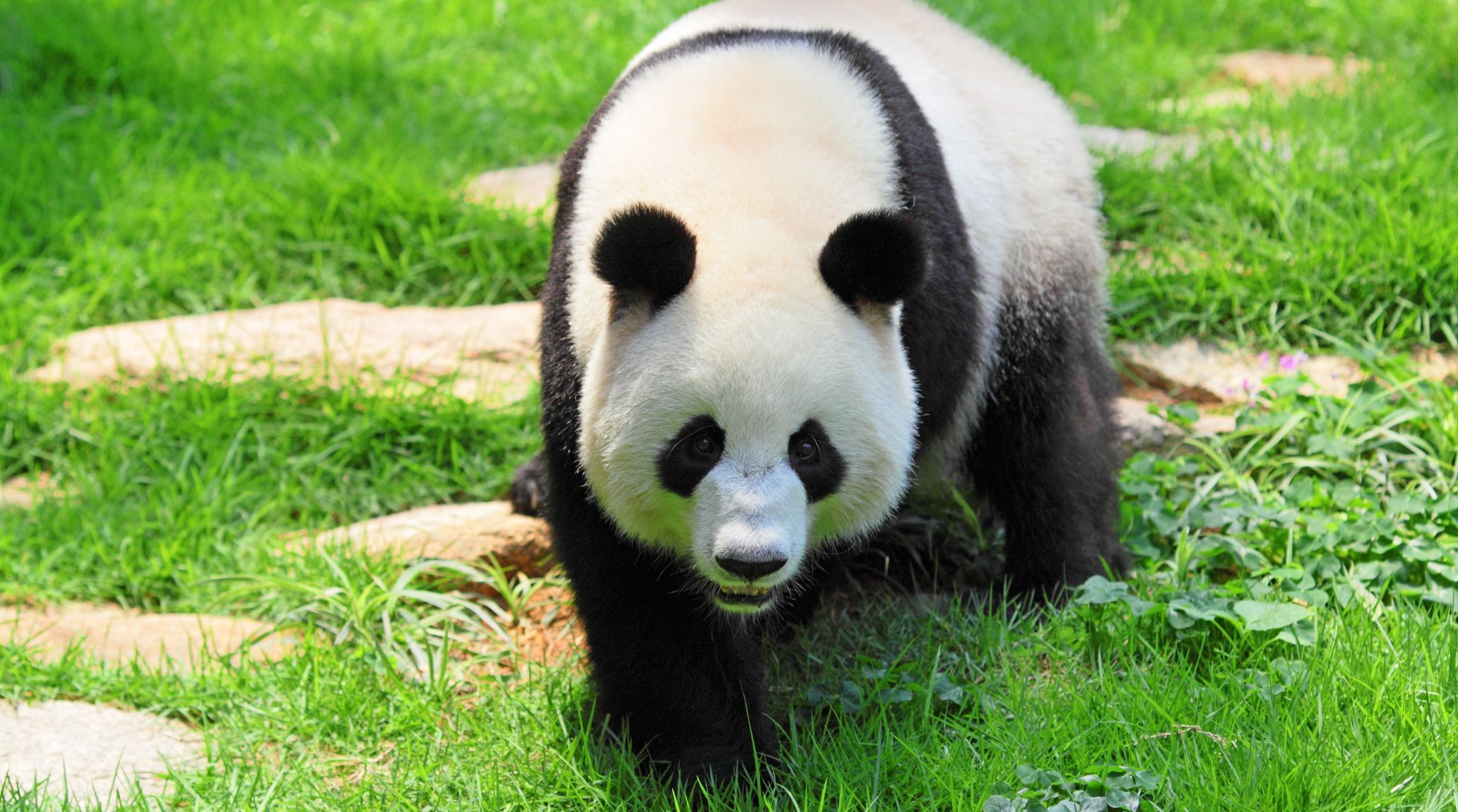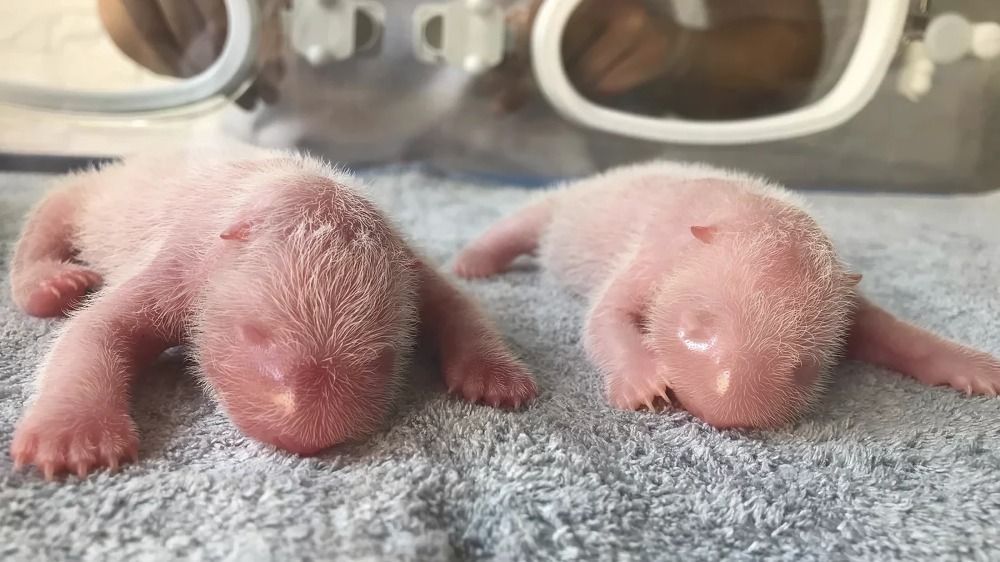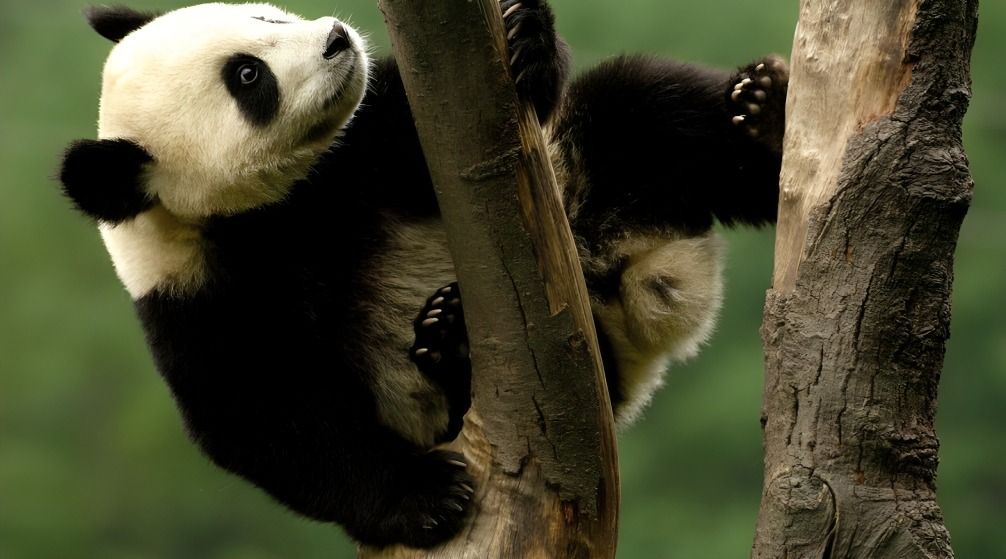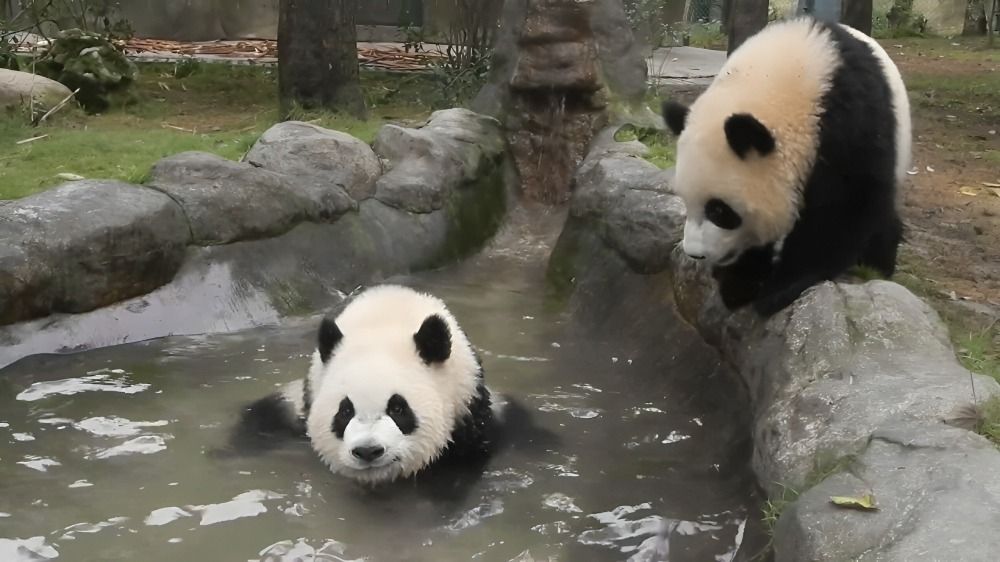
“
1
”
Known for their distinctive black and white fur and bamboo diet, pandas have long captured the imaginations and hearts of people around the world. In this comprehensive article, we embark on a journey to explore the captivating world of pandas, uncovering 20 fascinating facts that illuminate their unique adaptations and significant role in conservation efforts. These gentle giants, native to the mountainous regions of central China, embody a remarkable blend of charisma and vulnerability that makes them both fascinating and deeply special creatures. Join us as we delve into their habitat, behaviors, and ongoing efforts to ensure their survival in the wild, offering insights into why pandas remain icons of both natural beauty and conservation significance globally. 1
Bamboo constitutes about 99% of a panda's diet, providing the bulk of their nutritional intake despite its low-calorie content. Pandas consume vast amounts of bamboo daily to meet their energy needs. 2

The Sichuan Giant Panda Sanctuaries, located in China, are the largest contiguous habitat for giant pandas. Covering 9,245 km² (3,569 mi²), this UNESCO World Heritage Site shelters over 30% of the global panda population.
Panda cubs are born blind and helpless, relying solely on their mother for warmth, milk, and protection in the den. They depend entirely on maternal care during their early stages of life. Their survival initially hinges on maternal support.3
Pandas have a low reproductive rate, with females ovulating only once a year and being fertile for just a few days. This limited fertility period affects their breeding opportunities. Their reproductive cycle is a challenge for population growth.4
The pregnancy period for giant pandas ranges from 95 to 160 days due to delayed implantation, where the fertilized egg does not immediately implant. This reproductive strategy affects the timing of birth. Delayed implantation is unique to pandas.5

Newborn pandas are incredibly small, weighing about 4 to 5 ounces (113 to 142 grams) at birth, and are born pink and hairless. Their small size and lack of fur make them highly dependent on their mothers. Neonatal pandas are extremely vulnerable.
Giant pandas typically live 15 to 20 years in the wild, facing natural threats and food challenges, but can live 25 to 30 years in captivity with proper care. Their lifespan varies significantly between wild and captive environments.6

They are excellent climbers and often take refuge in trees to avoid predators or rest after feeding. Climbing helps them evade danger and find comfort. Their climbing ability is crucial for their survival in the wild.
On average, giant pandas defecate about 40 times a day. This high frequency is due to their bamboo-heavy diet, which necessitates consuming large amounts of food and producing frequent bowel movements to process their fibrous diet.7
They primarily eat bamboo, consuming up to 40 pounds (18 kilograms) daily due to their inefficient digestive system. Bamboo makes up the bulk of their diet despite its low nutritional value. Their feeding habits are crucial for their survival.8
Pandas communicate through vocalizations like bleats, honks, and growls, serving different purposes, from mating calls to warning signals. These sounds are vital for their social interactions. Communication helps pandas with mating and territory.9

The oldest captive panda was Jia Jia, a female giant panda born in 1978 who lived to be 38 years old. She resided at Ocean Park Hong Kong from 1999 until she died in 2016.
Conservation efforts have increased the panda population, but habitat loss remains a significant threat. Ongoing conservation is vital for their future. Despite improvements, protecting their habitat is crucial for their long-term survival.10
Giant pandas are considered a "living fossil" due to minimal evolutionary changes over millions of years. Fossil records show pandas have existed for at least 8 million years. They are a unique link to prehistoric times.11
Giant pandas dedicate 10 to 16 hours a day to feeding. Their extensive eating habits are necessary to consume enough bamboo, their primary diet, to meet their nutritional needs and sustain their large size throughout the day.12

Pandas are excellent swimmers and enjoy playing in the water. They can swim across rivers and streams, which helps them move between feeding areas. Swimming is an important behavior for their mobility.
During their first month, mother red pandas provide near-constant protection to their cubs. The cubs rest on their mother's front and are covered by her paw, arm, or head, ensuring they remain safe and secure throughout this critical early period.13
Pandas are solitary animals, roaming and foraging alone except during the breeding season. Males and females only come together briefly to mate. Their solitary nature affects their social behavior and territory.14
The giant panda’s scientific name, Ailuropoda melanoleuca, translates to “black and white cat-foot.” This name reflects the panda's distinctive black-and-white coloring and its large, rounded feet, which are adapted for grasping bamboo.15
Giant pandas are a flagship species for conservation, highlighting the importance of preserving biodiversity and ecosystems. Protecting pandas helps maintain balanced ecosystems. Their conservation symbolizes broader environmental efforts.16


